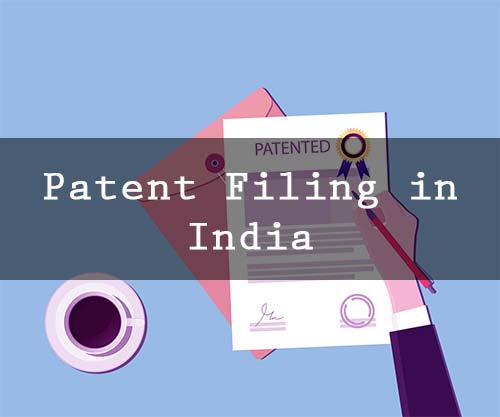Guide to Patent Filing in India
Guide to Patent Filing in India

Membership in International Treaties
India is a signatory to the following governing international covenants relating to patents:
- TRIPS Agreement which comes under the World Trade Organization
- Convention establishing the World Intellectual Property Organization (WIPO)
- The Paris Convention for the Protection of Industrial Property with effect from December 7, 1998.
- Patent Cooperation Treaty (PCT) with effect from December 7, 1998.
Types of patent applications
- Ordinary patent applications.
- Convention applications.
- PCT International Phase and National Phase applications.
- Patents of addition applications.
- Divisional applications.
Eligibility to apply
One can submit an application either individually or jointly. The application can be filed directly by the inventor or through a legal representative. Such a representative could be employed for patent drafting and patent filing. Applications can also be done jointly by two assignees which could include two or more corporations.
Mandatory documents required for filing an application
- 3 copies of the Application form.
- Drawing of the invention (3 copies).
- The invention’s abstract (3 copies).
- Information on the listing of the filing date, application number, and also the current status of every foreign patent application.
- The Inventor’s declaration to file complete specification in case of the provisional specification.
- Power of attorney (in case it is being filed by the hired Patent Agent).
- Applicable fees to be paid in either cash/demand draft or cheque.
Inventions which are non-patentable
- An invention which is frivolous or contrary to well-established laws of nature. Example: A machine giving more than 100% performance.
- An invention which is primarily intended to be used for a purpose which is contrary to morality or law or public health. Example: Biological warfare weapon.
- The discovery of a scientific principle or development of an abstract theory. Example: Archimedes Principle.
- The discovery of a new property or a new usage of a commonly known substance or use of any known process, apparatus, or machine. Example: New uses of Neem.
- Obtaining of a substance by mere admixture that is nothing but an aggregation of numerous components or properties. Example: Combiflam [Paracetamol + Brufen]
- Arrangement or re-arrangement of known devices functioning independently in a known way. Example: Umbrella with pepper spray.
- A method of horticulture or agriculture. Example: Method for improved irrigation.
- Process of treatment of humans and animals. Example: Method of vaccination/blood transfusion.
- Plants/animals/biological processes for the production of plants and animals. Example: Clones/Method of breeding.
- Mathematical or business method or algorithms. Example:
- Method of performing a mental act. Example: Method of solving Rubric Cube
- Presentation of information and topography of integrated circuits.
- An invention which is traditional knowledge. Example: Traditional uses of Haldi.
- The invention related to atomic energy.
The above key information will facilitate you in a patent filing in Indiaseamlessly even if you are doing it for the first time.


